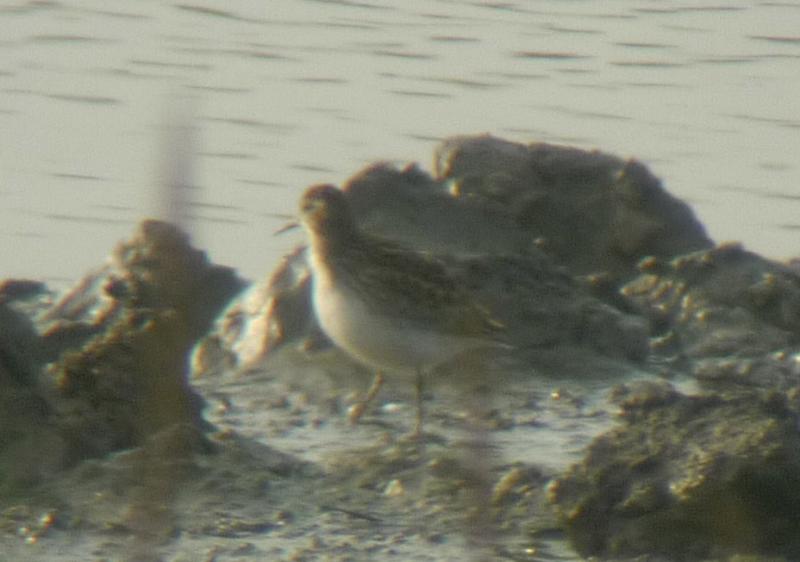
On Thursday 22 October 2009 Martijn Bot was birding in the Vreugderijkerwaard Ovl and observed a Calidris-Sandpiper from a long distance. He was not able to identify the bird, but he had to go. Worried as he was about the bird's jizz, he emailed some birders living in the area and Hans Pohlman decided to look for it the next day. Around 14.30 hours he was able to find the bird and was also worried about the jizz. He warned some birders and Mark Zekhuis, David uit de Weerd, Lennart Steen, Joop van Ardenne plus girlfriend, Herman Bouwman and Rob Felix came to take a look. They thought it was most probably a Long-toed Stint Calidris subminuta and at 16:00 hours they alerted the Dutch Birding Alert System. Till darkness fell in, many birders made it through traffic jams and obtrusive bosses. I could not make it before dark, but the next morning I was able to see it well, albeit from quite a distance. Again a happy crowd, only six days later!
The bird was a juvenile or first-winter (better to label it as a first calendar-year). Also present and sometimes in the same scope view was a Pectoral Sandpiper Calidris melanotos!


It was accepted as the first record for the Netherlands. Like Caspian Plover, Long-toed Stint is a rare vagrant in the Western Palearctic. Arnoud van den Berg made the following quick overview:
The Dutch record is therefore the tenth in the WP.
Go to the main-index, the 2009-index or the Baltimore Oriole?